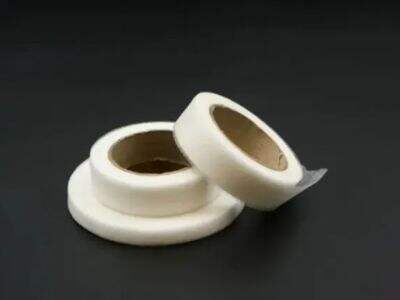What are the hot melt adhesives but quite amazing science behind our oh-so bonding clothes and fabrics? How does that come about, you may wonder? Read on about hot melt adhesives on fabric, and understand how they are absolute wizards.
Chemistry in Textile Bonding: The Hot Melt Adhesives
Hot melt adhesives consist of polymers that are solid at room temperature but which can be melted and transformed into a liquid when heated. As soon as these Hot Melt Adhesive Web/tape are put on textiles, they cool down and also return to a strong type once more, signing up with the textile fibers with each other. This, in essence, is how thermoplastic bonding, the very principle on which hot melt adhesives for textiles work.
The reasons behind textiles sticking together: Hot melt adhesives
The application of hot melt adhesives to fabrics which are then bonded by means of heat and pressure using special equipment. Once the adhesive has cooled and hardened, it creates a durable bond between the fibers of the textiles. This bond is so great that not only can it withstand washing and drying, but also ironing. That is why EVA Hot Melt Adhesive Double Side Fusing Film Web Interlining are used in the textile industry for producing clothes, bags, shoes and etc.
Benefits Of Hot Melt Adhesives In Textile Applications
One of the main benefits offered by hot melt adhesives is quick and easy application for a faster, more efficient production process. This leads to both cost reduction and waste reduction, resulting in more affordable and eco-friendly textiles. CoPA Double Side Fusing Soft Iron On Hemming Tape Hot Melt Adhesive Web Interlinin are also non-toxic and user-friendly, being a favourite to bond skin- friendly fabrics.
What affects the strength of hot melt adhesives for textile bonding?
There are several aspects that impact the efficiency of hot melt adhesives in textile bonding. Adhesives can depend heavily on the type of fabric to be bonded, as well as the temperature at which they are applied, and, in some cases, upon the pressure used to stick a couple fabrics together — all these can play a major role in determining how strong and durable the bond will ultimately be. Considering these factors is critical during use of hot melt adhesives in textile applications to achieve the optimal results.
Advanced hot melt technology innovations that improve the performance of textile bonding
Over the years, as technology advances, so does the science of hot melt adhesives. Advancements in adhesive chemistries and bonding methods provides today even more robust, durable, long lasting textile to textile bonds. In addition, new types of additives and fillers are being created to better the functionality of hot melt adhesives across various textile uses.
How to Make Hot Melt Adhesives Work Better in Textile Bonding?
At BANQ INTERLINING, we are working tirelessly towards finding out new ways of alleviating the performance with hot melt adhesives for a Knowledgeable textiles bonding, We are constantly improving adhesive technology to better adapt to the changing requirements in the fast moving fashion business with more quality and strength. We offer innovative solutions that will help define the future of textile bonding and change the very ways fabrics are created and joined.
Table of Contents
- Chemistry in Textile Bonding: The Hot Melt Adhesives
- The reasons behind textiles sticking together: Hot melt adhesives
- Benefits Of Hot Melt Adhesives In Textile Applications
- What affects the strength of hot melt adhesives for textile bonding?
- Advanced hot melt technology innovations that improve the performance of textile bonding
- How to Make Hot Melt Adhesives Work Better in Textile Bonding?

